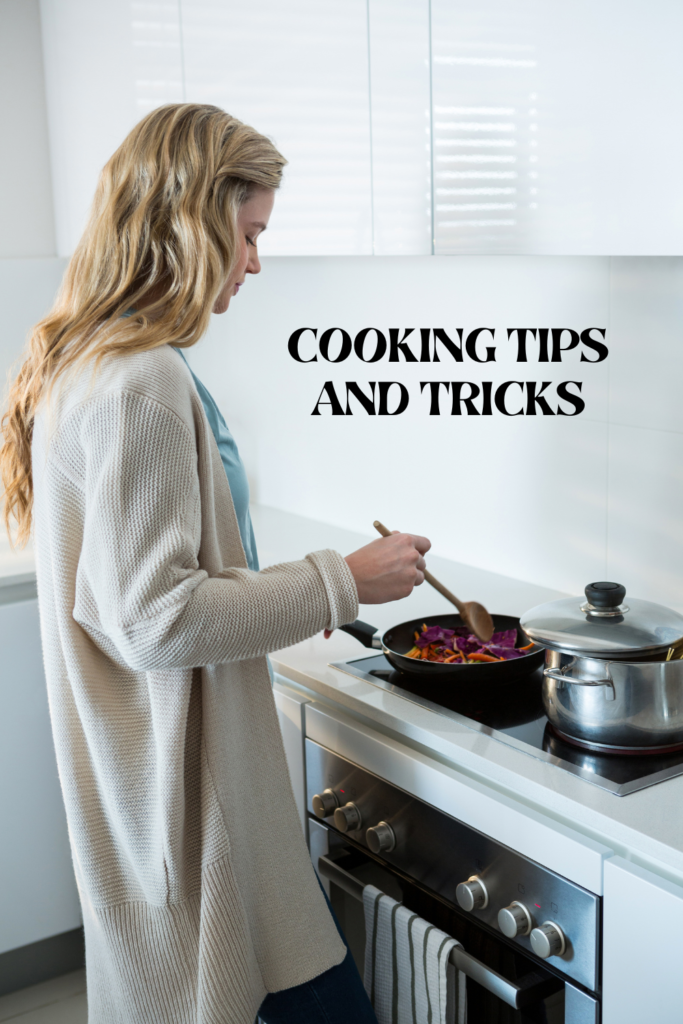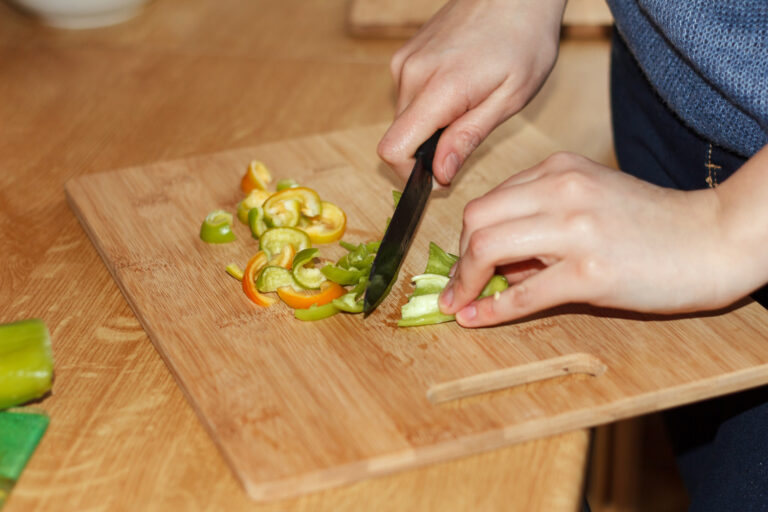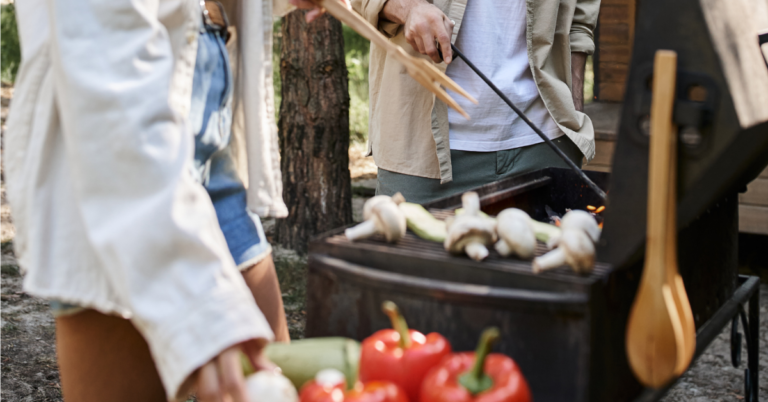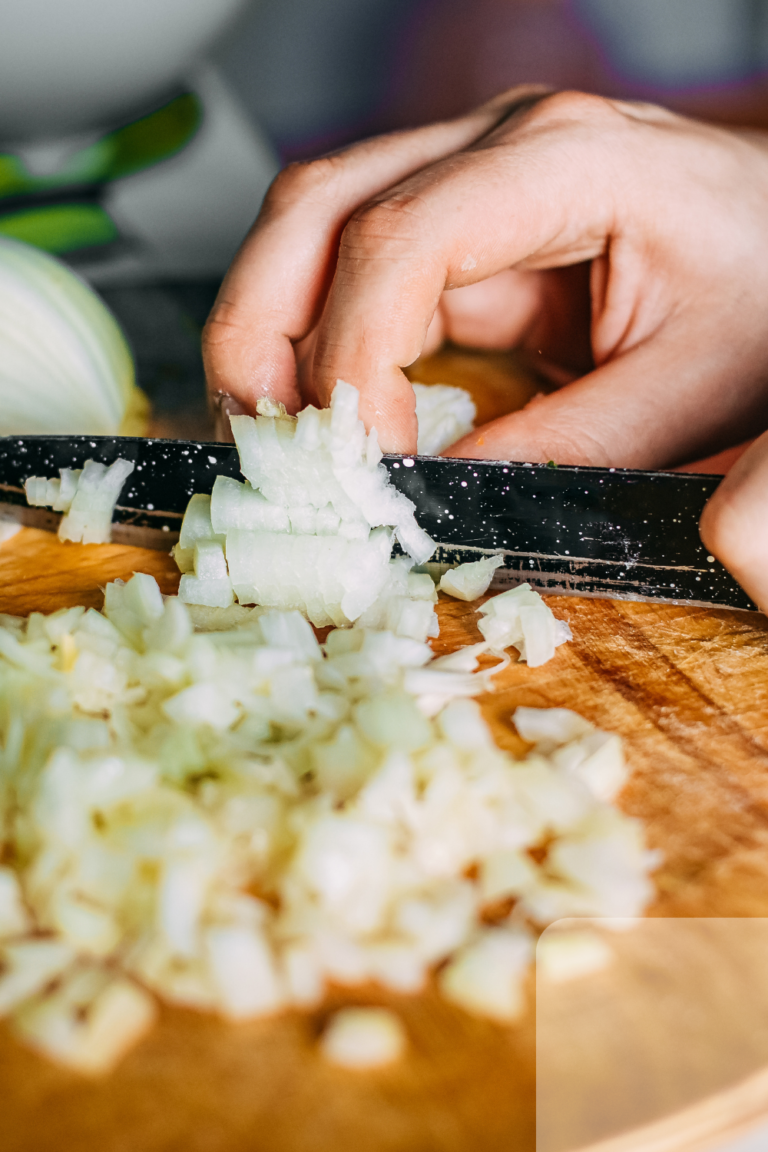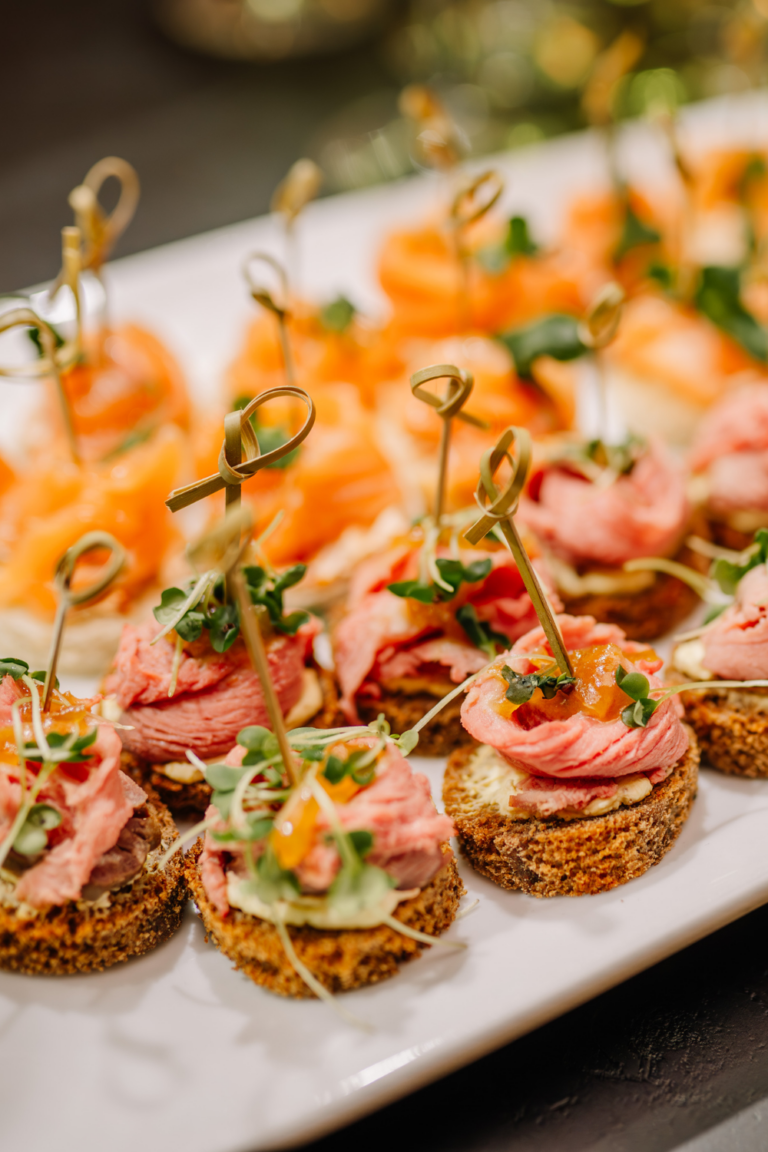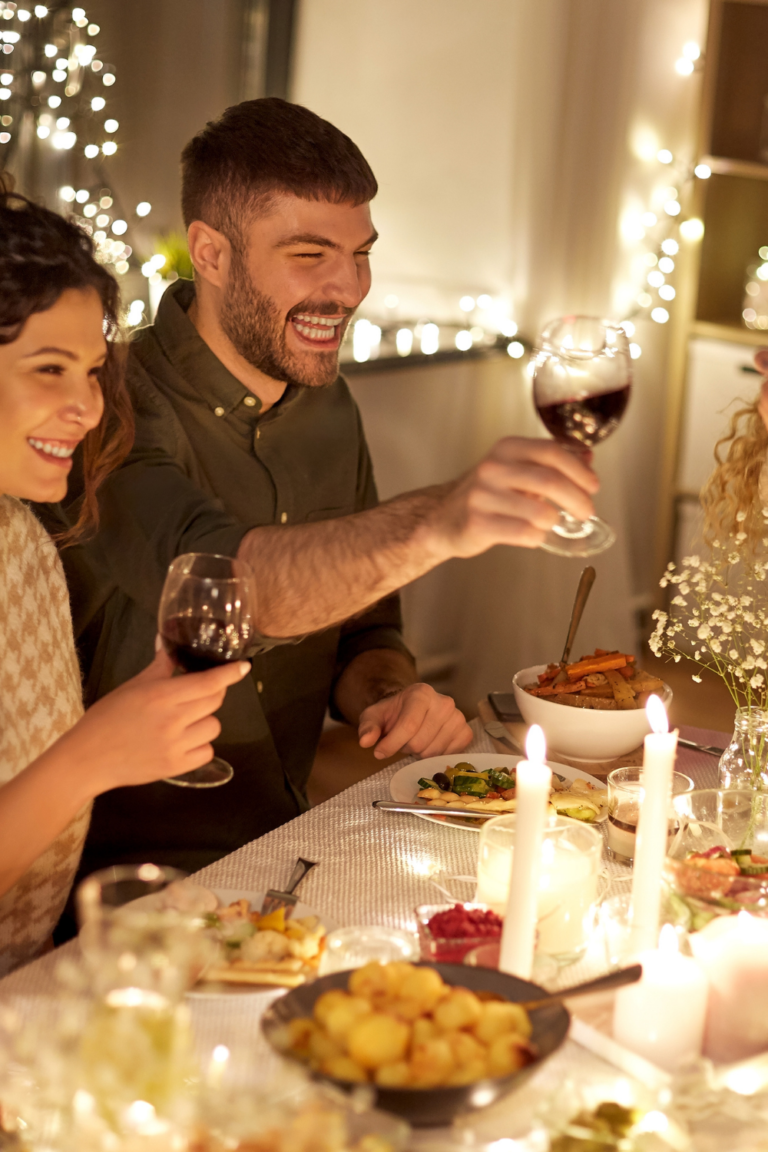This post may contain affiliate links, view the disclosure for more information.
Get ready to improve your kitchen prowess as I discuss these time-tested cooking tips and tricks! Cooking at home can be an outlet for us to express our creative energy, but spending any time in the kitchen can be a challenge if you aren’t set up for success with the appropriate cooking knowledge. That is why I have compiled my best 7 cooking tips and tricks based on my chef knowledge and experience over the years.
Whether you are living on your own, with roommates, or with family— cooking at home can be difficult if you don’t have the fundamental culinary knowledge. With these cooking tips and tricks, you can easily transform the way you create delicious dishes when cooking at home.
As a home cook and professional chef myself, you are going to learn the best cooking tips and tricks that can save you time, energy, and money. From the steps taken to prepare your dishes, to the safest way to hold a knife, these cooking tips and tricks will change the way you cook at home forever.
This post is about cooking tips and tricks.
Top Cooking Tips and Tricks
1. Pick an Appropriate Cooking Oil
We have all heard the benefits of cooking with olive oil— how it is a healthy fat, contains lots of antioxidants, and how consuming olive oil has many health benefits. While all of this is true, it is important to know the appropriate time and place to use this oil. High-heat cooking is NOT one of those times.
When sautéing, grilling, searing, or frying, be sure to pick an oil with a high heat tolerance, otherwise known as a high smoke point cooking oil. Avocado oil, grapeseed oil, and canola oil are all fantastic high-temperature cooking oils, as they are colorless, odorless, and generally mild flavored. Avocado oil, in particular, shares a lot of those healthy benefits that olive oil does, and for that reason, it is my personal favorite.
If you do use olive oil for high-heat cooking, keep in mind that olive oil will burn quicker than the oils listed above. When olive oil burns, it releases a chemical called acrolein. Acrolein is created from the combustion of burning oil, has an unpleasant odor, and can irritate the eyes, nose, and throat. Save your expensive olive oils for salad dressings, baking, and roasting, where your cooking temperatures are lower and cooking times are usually slower.
2. Be Confident Substituting Ingredients
Have you ever been in the middle of cooking dinner and realized that you don’t have enough sour cream that the recipe calls for? Don’t worry— we’ve all been there. But don’t panic! Knowing the appropriate ingredient swaps for cooking can save your dinner. (By the way, I love using Greek yogurt or labneh as a swap for sour cream.)
Sometimes, there isn’t an appropriate ingredient replacement, and that’s okay too! Have the confidence the execute a dish to the best of your ability utilizing your pantry basics to level up the flavor of the dish. Cooking is an art— lean into your creativity to be bold with your dishes! And if it doesn’t work out, count it as a learning experience.
3. Knife Skills
Knife skills are the backbone of every great home cook and chef’s skills. When you are just beginning cooking, it may be a good idea to take a knife skills class, or at least practice your knife skills at home with a 5 lb bag of potatoes or apples (mashed potatoes and applesauce for dayyys).
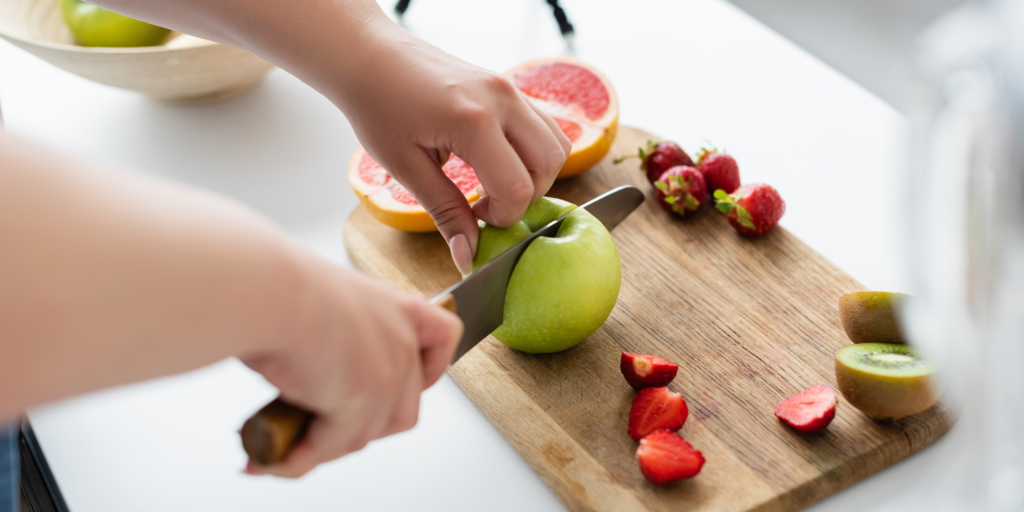
In addition to practicing your knife cuts, the most important kitchen tip is to practice how to hold a kitchen knife. The pinch grip is the best way to hold a knife, as it is the safest and most efficient way to chop and slice when cooking. Start by pinching the blade with your thumb and pointer finger close to the heel of the blade. Next, wrap your remaining 3 fingers underneath the handle of the knife.
Your other hand should be in a claw, with your pinky and thumb pinching the product you are cutting on either side. Your 3 middle fingers should be tucked underneath themselves, protecting the fingertips. Move the blade of the knife to the knuckles of your non-dominate hand, and chop away!
4. A “Pinch” of Salt
I can not stress this enough— salt is your friend! Seasoning your food in layers is a crucial cooking tip for you to elevate your dish to restaurant level. But what is a pinch of salt? When you see this step in recipes, be sure to grab your salt with all of your fingers and thumb.
A dash of salt is when you grab the salt with your pointer finger and your thumb, which is a much smaller quantity than a pinch. Usually, a dash of salt is more appropriate for baking, when you need to watch your salt levels more carefully.
There are a variety of different salts, and it can be difficult to know what the best salt is for cooking. The best salt for cooking is kosher salt, and by far and away, chefs prefer Diamond Crystal Kosher Salt. This kosher salt is flaky and fine, and easy to grab with your fingertips, and you can really feel how much salt you are grabbing. Because the flakes of salt are so fine, it has a high meltability, meaning it can evenly disperse flavor in your food.
5. Tasting as You Go
Just as it is important to season in layers, it is also just as important to taste your food as you go. This way you can self-correct, or adjust the flavor of the food, as it continues to cook, rather than rushing to correct any potential mistake at the end of the cooking process.
Tasting your dish in all of its stages helps you “get to know” your food and understand building flavor, outside of simply just reading the recipe. Keep in mind, that the flavors of the dish will change over time, particularly if you are braising or reducing the liquid in the pan. Flavors become more concentrated over time as the liquid evaporates.
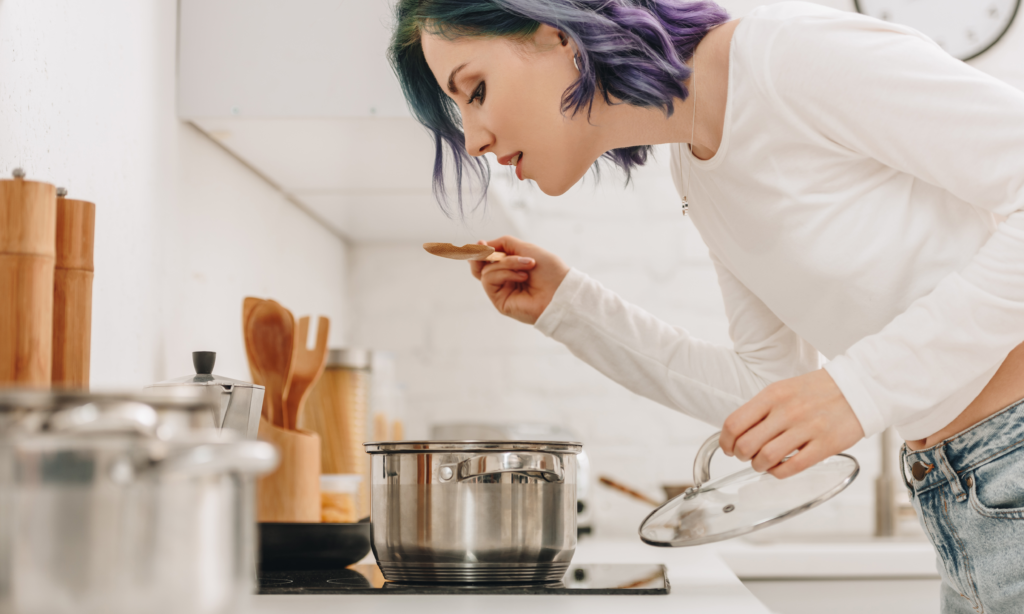
6. “Mise En Place”
“Everything in it’s place” or “Gathering” or “Putting in it’s place”. To be honest with you, all chefs have different interpretations of this french phrase, but the basis is the same. Mise en place is such an easy kitchen hack. Before you begin cooking, you need to PREP. Think of it this way, would you start painting a picture if the colors of paint you intended to use are still in the paint tubes? Would you begin to clean the bathroom if the chemicals are still in the garage? The answer is NO. You simply can not begin the process of cooking without having all the necessary ingredients ready and at your disposal.
Not only is cooking all about timing (ie; sweating the onions for 5 minutes before adding in the wine), but having all the ingredients prepared ahead of time takes the stress out of the cooking process, keeps the kitchen cleaner, and allows you to create dishes quickly and effortlessly. Having your mise en place allows you to focus on the cooking process, instead of stressfully juggling and multi-tasking.
Before you even turn on the stove, you should make sure that all the vegetables are peeled and diced, all your cooking equipment is pulled out of the drawers and cabinets, and your ingredients are measured. I personally also like to have a spare mixing bowl on the counter for trash or food debris so I can clean up as I go.
7. Adjusting the Heat of Your Pan
When cooking ANYTHING on the stove, you will need to pre-heat your pans before adding your ingredients. This is an extremely important cooking tip everyone should know, as it helps your dish cook evenly by equally distributing the heat.
Hold your hand over the top of the pot or pan, about 4 to 5 inches away. I call this the “warm bath water” test. If the heat radiating from the pan feels like a warm bath, then you are ready to cook!
Additionally, you will never cook the entire dish throughout with the same level of heat. Depending on how many ingredients you have added to the pan, or what cooking technique you are doing, you will need to adjust the heat. For example, if you are reducing the liquid in the pan to make a sauce, you may want to have the heat on medium or medium high, rather than a low heat, as reducing a sauce on a low heat may take hours. If you are searing chicken breasts in a pan, you may want to start on a medium heat, but as you add more chicken to the pan, you will need to increase the temperature.

